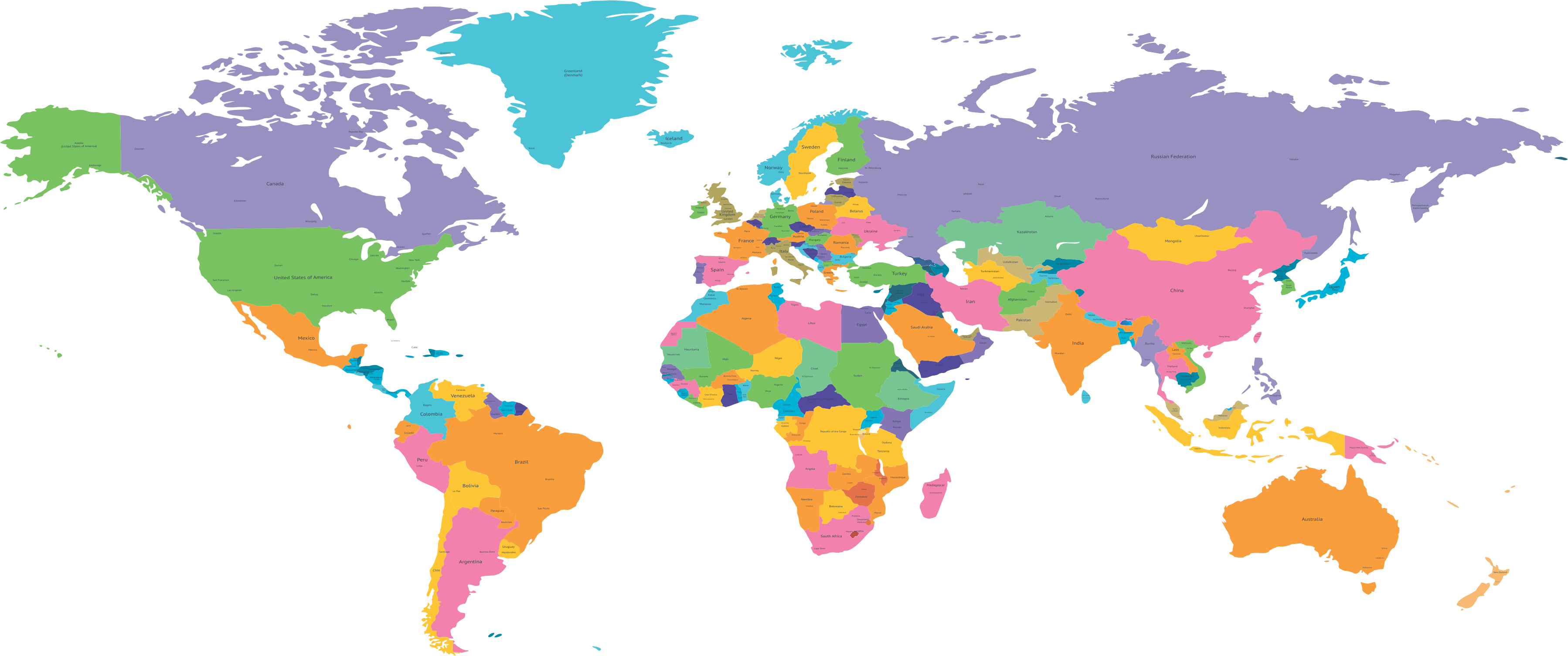Impact of Psychological Capital on Turnover Intentions and Organization Citizenship Behavior: Mediating Role of Work Engagement
DOI:
https://doi.org/10.62997/rl.2025.41056Keywords:
Psychological Capital (PsyCap), Turnover Intentions (TI), Organization Citizenship Behavior (OCB), Work Engagement (WE)Abstract
Individuals have long been interested in investigating on how employees show intentions towards leaving or show citizenship behavior towards organizations. This research helps to understand the impact of psychological capital on individual’s turnover intentions and organization citizenship behavior. Also, this study ascertains, the mediating function of work engagement among psychological capital and turnover intentions, and among psychological capital and organization citizenship behavior, as well. Data for the study was collected through self-administered questionnaire, where target population consists of individuals working in education sector from public and private sector in Punjab-Pakistan. Data was analyzed in two steps, at first confirmatory factor analysis (CFA) was performed for testing the fitness of model and then structural equation model (SEM) was performed for testing hypotheses. SPSS and AMOS applications were deployed for data analysis, whereas mediation was tested by using Hays process macros in SPSS. On analyzing data, significant results were found for all hypothesized direct relationships, and it was concluded that work engagement plays a significant mediating function among psychological capital and turnover intentions and also plays significant mediating role between psychological capital and organization citizenship behavior.
References
Aburub, B. S. H. (2020). Employee retention & Engagement solution. Open Journal of Business and Management, 08(06), 2805–2837. https://doi.org/10.4236/ojbm.2020.86173
Alfes K, Shantz AD, Truss C, Soane EC (2013) The link between perceived human resource management practices, engagement and employee behaviour: a moderated mediation model. The International Journal of Human Resource Management, 24(2), 330–351. https://doi.org/10.1080/09585192.2012.679950
Avey, J. B., Luthans, F., & Jensen, S. M. (2009). Psychological capital: A positive resource for combating employee stress and turnover. Human Resource Management, 48(5), 677-693. https://doi.org/10.1002/hrm.20294
Avey, J. B., Luthans, F., Smith, R. M., & Palmer, N. F. (2010). Impact of positive psychological capital on employee well-being over time. Journal of Occupational Health Psychology, 15(1), 17-28. https://doi.org/10.1037/a0016998
Avey, J. B., Reichard, R. J., Luthans, F., & Mhatre, K. H. (2011). Meta‐analysis of the impact of positive psychological capital on employee attitudes, behaviors, and performance. Human Resource Development Quarterly, 22(2), 127-152. https://doi.org/10.1002/hrdq.20070
Avey, J. B., Wernsing, T. S., & Luthans, F. (2008). Can positive employees help positive organizational change? Impact of psychological capital and emotions on relevant attitudes and behaviors. The Journal of Applied Behavioral Science, 44(1), 48–70. https://doi.org/10.1177/0021886307311470
Babcock-Roberson, M. E., & Strickland, O. J. (2010). The relationship between charismatic leadership, work engagement, and organizational citizenship behaviors. The Journal of Psychology, 144(3), 313-326. https://doi.org/10.1080/00223981003648336
Bakker, A. B. (2010). Engagement and “job crafting”: Engaged employees create their own great place to work. In Handbook of employee engagement. Edward Elgar Publishing.
Bakker, A. B., Demerouti, E., & Ten Brummelhuis, L. L. (2012). Work engagement, performance, and active learning: The role of conscientiousness. Journal of Vocational Behavior, 80(2), 555-564. https://doi.org/10.1016/j.jvb.2011.08.008
Bennett, R. J., & Robinson, S. L. (2000). Development of a measure of workplace deviance. The Journal of Applied Psychology, 85(3), 349–360. https://doi.org/10.1037/0021-9010.85.3.349
Blau, Peter M. (1964). Exchange and Power in Social Life. New York: John Wiley & Sons, Inc
Dubey, A., Varma, A., & Riasudeen, S. (2025). Exploring the role of organizational identification in the nexus of psychological capital and organizational-oriented citizenship behaviors: Evidence from healthcare professionals in India. Journal of Health Organization and Management. https://doi.org/10.1108/jhom-05-2024-0187
Griffeth, R. W., Hom, P. W., & Gaertner, S. (2000). A meta-analysis of antecedents and correlates of employee turnover: Update, moderator tests, and research implications for the next millennium. Journal of Management, 26(3), 463-488. https://doi.org/10.1177/014920630002600305
Gupta, M. (2017). Corporate social responsibility, employee–company identification, and organizational commitment: Mediation by employee engagement. Current Psychology (New Brunswick, N.J.), 36(1), 101–109. https://doi.org/10.1007/s12144-015-9389-8
Hobfoll, S. E., & Wells, J. D. (1998). Conservation of resources, stress, and aging: Why do some slide and some spring?” In Handbook of aging and mental health: An integrative approach. Plenum.
Huang, I., Lin, H., & Chuang, C. (2006). Constructing factors related to worker retention. International Journal of Manpower, 27(5), 491-508. https://doi.org/10.1108/01437720610683976
Kahn, W. A. (1990). Psychological conditions of personal engagement and disengagement at work. Academy of Management Journal, 33(4), 692–724. https://doi.org/10.5465/256287
Karatepe, O. M. (2011). The effects of coworker and perceived organizational support on hotel employee outcomes. Journal of Hospitality & Tourism Research, 36(4), 495-516. https://doi.org/10.1177/1096348011413592
Karatepe, O. M., & Karadas, G. (2014). The effect of psychological capital on conflicts in the work–family interface, turnover and absence intentions. International Journal of Hospitality Management, 43, 132-143. https://doi.org/10.1016/j.ijhm.2014.09.005
Karatepe, O. M., & Karadas, G. (2015). Do psychological capital and work engagement foster frontline employees’ satisfaction? International Journal of Contemporary Hospitality Management, 27(6), 1254-1278. https://doi.org/10.1108/ijchm-01-2014-0028
Laschinger, H. K. S., Grau, A. L., Finegan, J., & Wilk, P. (2012). Predictors of new graduate nurses’ workplace well-being. Health Care Management Review, 37(2), 175-186. https://doi.org/10.1097/hmr.0b013e31822aa456
Laschinger, H. K., & Grau, A. L. (2012). The influence of personal dispositional factors and organizational resources on workplace violence, burnout, and health outcomes in new graduate nurses: A cross-sectional study. International Journal of Nursing Studies, 49(3), 282-291. https://doi.org/10.1016/j.ijnurstu.2011.09.004
Luthans, F. (2002). The need for and meaning of positive organizational behavior. Journal of Organizational Behavior, 23(6), 695-706. https://doi.org/10.1002/job.165
Luthans, K. W., & Jensen, S. M. (2005). The linkage between psychological capital and commitment to organizational mission. JONA: The Journal of Nursing Administration, 35(6), 304???310. https://doi.org/10.1097/00005110-200506000-00007
Miles, D. E., Borman, W. E., Spector, P. E., & Fox, S. (2002). Building an integrative model of extra role work behaviors: A comparison of counterproductive work behavior with organizational citizenship behavior. International Journal of Selection and Assessment, 10(1-2), 51-57. https://doi.org/10.1111/1468-2389.00193
Moustafa, M. A., Elrayah, M., Aljoghaiman, A., Hasanein, A. M., & Ali, M. A. (2024). How does sustainable organizational support affect job burnout in the hospitality sector? The mediating role of psychological capital. Sustainability, 16(2), 840. https://doi.org/10.3390/su16020840
Podsakoff, N. P., Podsakoff, P. M., MacKenzie, S. B., Maynes, T. D., & Spoelma, T. M. (2014). Consequences of unit-level organizational citizenship behaviors: A review and recommendations for future research. Journal of Organizational Behavior, 35(S1), S87-S119. https://doi.org/10.1002/job.1911
Rahman, M. H., & Karim, D. N. (2022). Organizational justice and organizational citizenship behavior: The mediating role of work engagement. Heliyon, 8(5), e09450. https://doi.org/10.1016/j.heliyon.2022.e09450
Rhoades, L., & Eisenberger, R. (2002). Perceived organizational support: A review of the literature. Journal of Applied Psychology, 87(4), 698-714. https://doi.org/10.1037//0021-9010.87.4.698
Rich, B. L., Lepine, J. A., & Crawford, E. R. (2010). Job engagement: Antecedents and effects on job performance. Academy of Management Journal, 53(3), 617-635. https://doi.org/10.5465/amj.2010.51468988
Saks, A. M. (2006). Antecedents and consequences of employee engagement. Journal of Managerial Psychology, 21(7), 600-619. https://doi.org/10.1108/02683940610690169
Schaufeli, W. B., Salanova, M., González-romá, V., & Bakker, A. B. (2002). The measurement of engagement and burnout: a two sample confirmatory factor analytic approach. Journal of Happiness Studies, 3(1), 71-92. https://doi.org/10.1023/a:1015630930326
Seval, H., & Caner, H. (2014). The impact of human resource management functions on corporate image. Springer Proceedings in Complexity, 435-457. https://doi.org/10.1007/978-3-319-09710-7_39
Shahpouri, S., Namdari, K., & Abedi, A. (2016). Mediating role of work engagement in the relationship between job resources and personal resources with turnover intention among female nurses. Applied Nursing Research, 30, 216-221. https://doi.org/10.1016/j.apnr.2015.10.008
Sweetman, D., & Luthans, F. (2010). “The power of positive psychology: Psychological capital and work engagement”, In Work engagement: A handbook of essential theory and research, (pp.54–68), Psychology Press.
Tims, M., B. Bakker, A., & Derks, D. (2014). Daily job crafting and the self-efficacy – performance relationship. Journal of Managerial Psychology, 29(5), 490-507. https://doi.org/10.1108/jmp-05-2012-0148
Tullar, J. M., Amick, B. C., Brewer, S., Diamond, P. M., Kelder, S. H., & Mikhail, O. (2016). Improve employee engagement to retain your workforce. Health Care Management Review, 41(4), 316-324. https://doi.org/10.1097/hmr.0000000000000079
Xanthopoulou, D., Bakker, A. B., Demerouti, E., & Schaufeli, W. B. (2007). The role of personal resources in the job demands-resources model. International Journal of Stress Management, 14(2), 121-141. https://doi.org/10.1037/1072-5245.14.2.121




